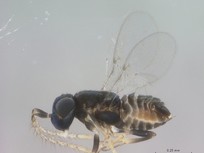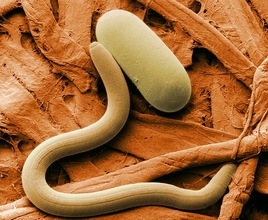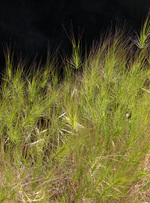|
Having trouble viewing this email? View it as a Web page.

|
|
|
Fresh from the
Field is a weekly album showcasing transformative impacts made by
partners supported by the National Institute of Food and Agriculture.
Editor: Falita Liles Aug.30, 2018
|
|
Success Stories
 Auburn
University Identifies Natural Enemy of Crop-Killing Kudzu Bug
Auburn University entomologists have
discovered and identified a tiny wasp that could provide a huge benefit to
soybean producers and other farmers. Though only about the size of a pinhead,
the newly detected parasitoid wasp, Ooencyrtus
nezarae, can do plenty of damage to the kudzu bug, a quarter-inch-long
invasive pest of soybeans and other legume crops in the Southeast. Researchers in
the lab of entomologist Henry Fadamiro were the first to detect the wasp’s
presence in North America.
"It is exciting to know that many
natural enemies are in the field helping to keep kudzu bug populations under
control. With this latest research, we have a potential explanation for the
decline in kudzu bug densities across the Southeastern United States,"
according to Blessing Ademokoya, one of the researchers at Auburn.
NIFA supports this
research through the Agriculture and Food Research Initiative.
Read the full story at the Auburn
University Newsroom. Photo
credit Jason Mottern and Rammohan Balusu-Auburn University.
|
News Coverage

Nematode Can Rebuild Muscle and Neurons After Complete Degradation
What can scientists learn
about human neurodegenerative disease from a major soybean pest? It’s not a
trick question; the answer lies in the soybean cyst nematode, one of two
classes of microscopic roundworms known to lose and then regain mobility as
part of their life cycle.
“This is an animal that
basically undergoes neurodegeneration, including nearly complete muscle
atrophy, and then is able to reverse it in later development. From a human
health perspective, I’m excited about the possibilities this could hold,” says
Nathan Schroeder, assistant professor in the Department of Crop Sciences at the
University of Illinois and corresponding author on the new study.
Applying these findings to
human neurodegenerative disease may still be a long way off, but the research
could lead to important practical outcomes for soybean pest management. Soybean
cyst nematode is the among the worst soybean pests in the United States and the
world, causing more than a billion dollars in yield loss annually. Exploiting
this mechanism, which appears to be unique to soybean cyst and root knot
nematode, another finding in the study, could be very good news for the soybean
industry.
NIFA supports this
research through the Hatch Act.
Read more at the University of Illinois News. USDA Photo.
|
Library

Invasive Grass Management in Wyoming: Proactive Strategies to ‘Stay Ahead of the Curve’
In addition to efforts to predict high-risk
areas for cheatgrass, researchers at the University of Wyoming are developing a
better understanding of management thresholds to optimize treatment
effectiveness. The team is also playing a central role in developing a
rapid-response strategy for two newly-documented invasive grasses in Wyoming
(medusahead and ventenata). This is the first occurrence of these species in
the Great Plains ecoregion, and proactive management actions may help to
minimize widespread negative economic and ecological impacts around the state
and region.
NIFA supports this research through the
Hatch Act.
Contact: Brian A Mealor, University of Wyoming. USDA photo.
|
Tweet of the Week
#NIFAIMPACTS

|
|

NIFA’s mission is to invest in and advance agricultural research, education, and extension that solve societal challenges. NIFA’s investments in transformative science directly support the long-term prosperity and global preeminence of U.S. agriculture. To learn more about NIFA’s impact on agricultural sciences, visit www.nifa.usda.gov/Impacts, sign up for email updates or follow us on Twitter @USDA_NIFA, #NIFAImpacts.
USDA is an equal opportunity lender, provider, and employer.
|
|